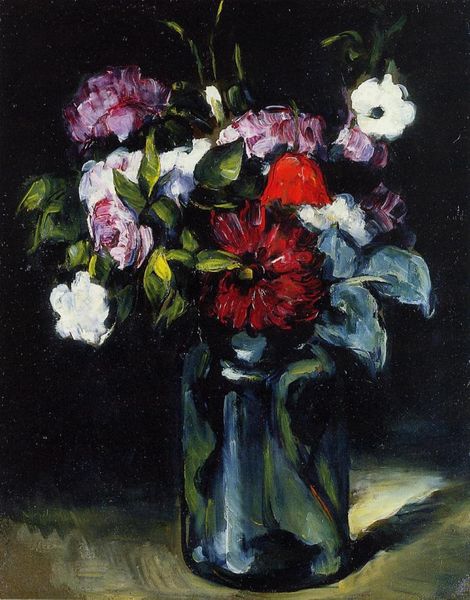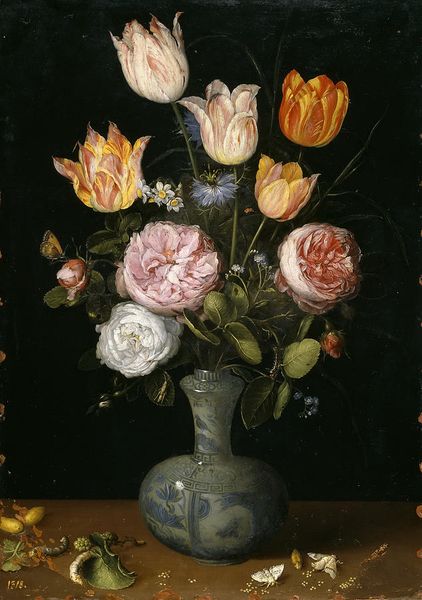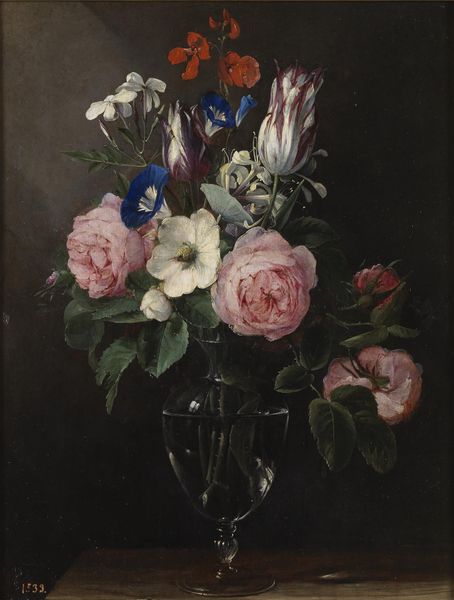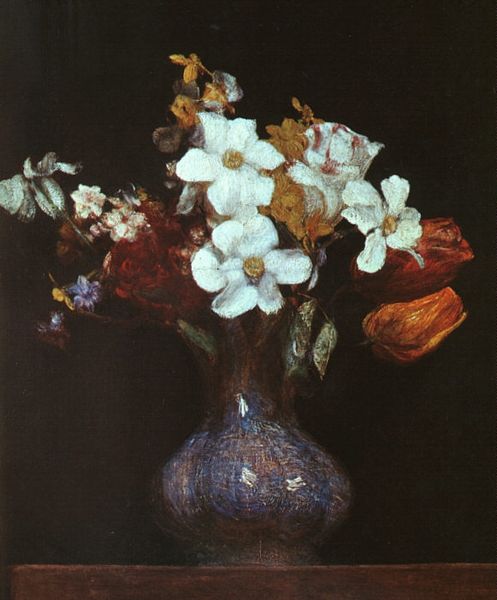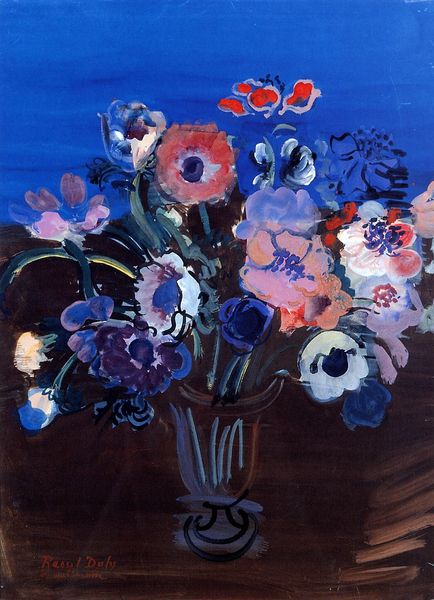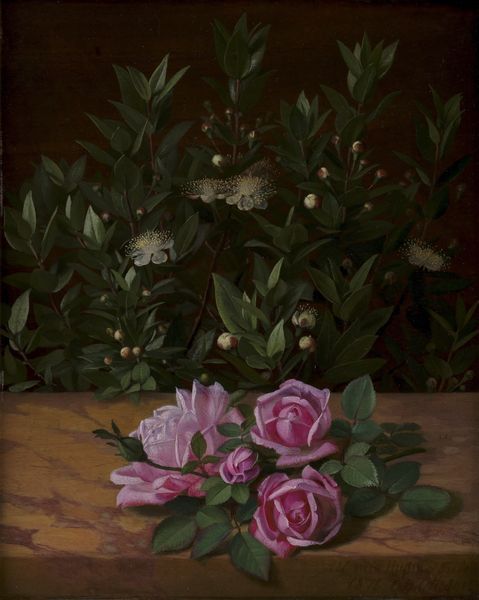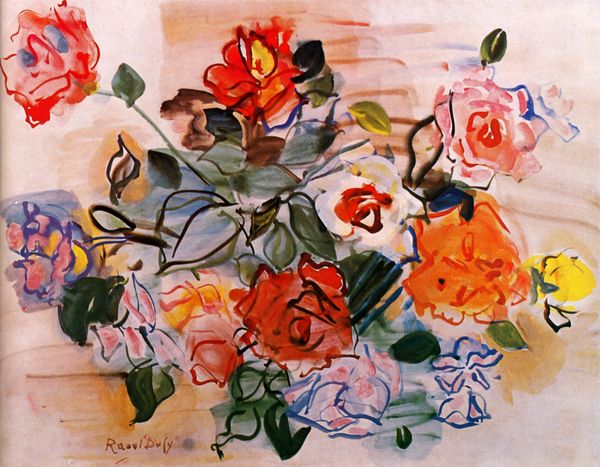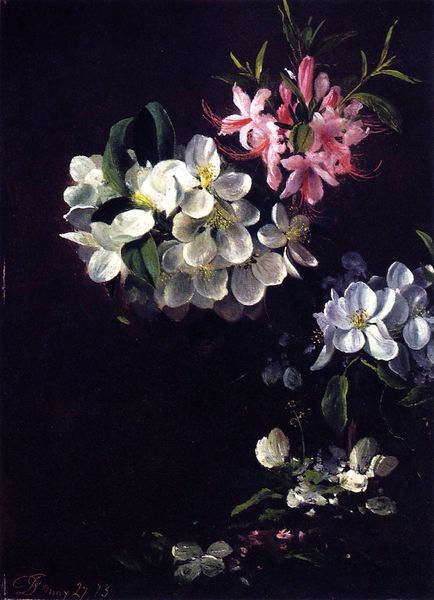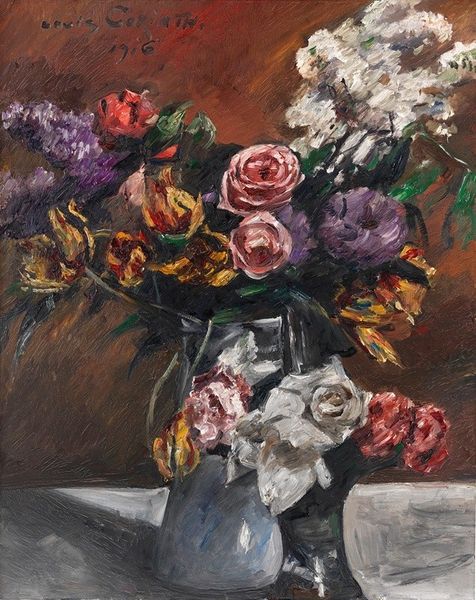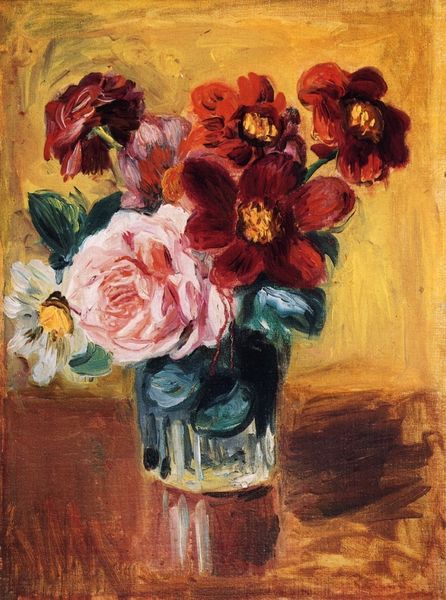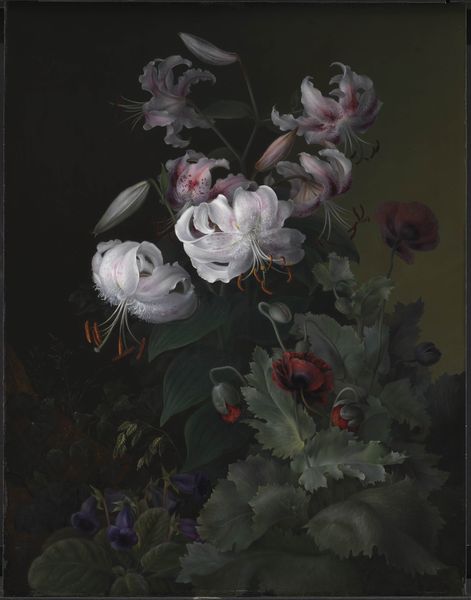
oil-paint
#
narrative-art
#
oil-paint
#
oil painting
#
surrealist
#
realism
Copyright: Dmitri Zhilinsky,Fair Use
Curator: Here we have Dmitri Zhilinsky’s "Triptych, Right Part," an oil painting created in 1973. Editor: My immediate impression is one of poised melancholy. The deep, almost gothic black backdrop heightens the delicacy of the flora. Curator: It’s interesting you use the word ‘gothic’. Throughout history, flowers carry significant, shifting symbolic weight. Roses are of course commonly linked with love, but they also denote secrecy, in masonic iconography for example. What is highlighted is their inevitable decay. Editor: Yes, the positioning reinforces that. See how the blooms are rendered against the flatness of the background plane. The dark background visually flattens the image while giving a dream-like quality to it, as if each blossom exists outside our normal awareness of space and time. Curator: And Zhilinsky, working within a Soviet context, would certainly have been aware of this symbolism and its impact. In his works, realism took the form of an ideologically-approved surrealism; everyday images charged with political connotations. Editor: The very application of the paint lends to the reading. There is such clear deliberation within his construction of form and shadow. And notice how Zhilinsky draws attention to line with those long, slender stems connecting the base with each blossom, mirroring the themes of connection and upward momentum? Curator: It all creates this very careful visual dance. These forms become an exploration of fragility, especially relevant within Zhilinsky's larger body of work as he tried to preserve cultural memories within Soviet Realism. Editor: It all adds to an incredible intensity, making us question each relationship of volume and tone as if something profound would reveal itself. Curator: Absolutely. What strikes me is how the piece reminds us of the silent stories symbols can carry across different cultures. Editor: And for me, it shows how seemingly simple forms hold complex compositional depths, creating space for layered readings and personal resonance.
Comments
No comments
Be the first to comment and join the conversation on the ultimate creative platform.
